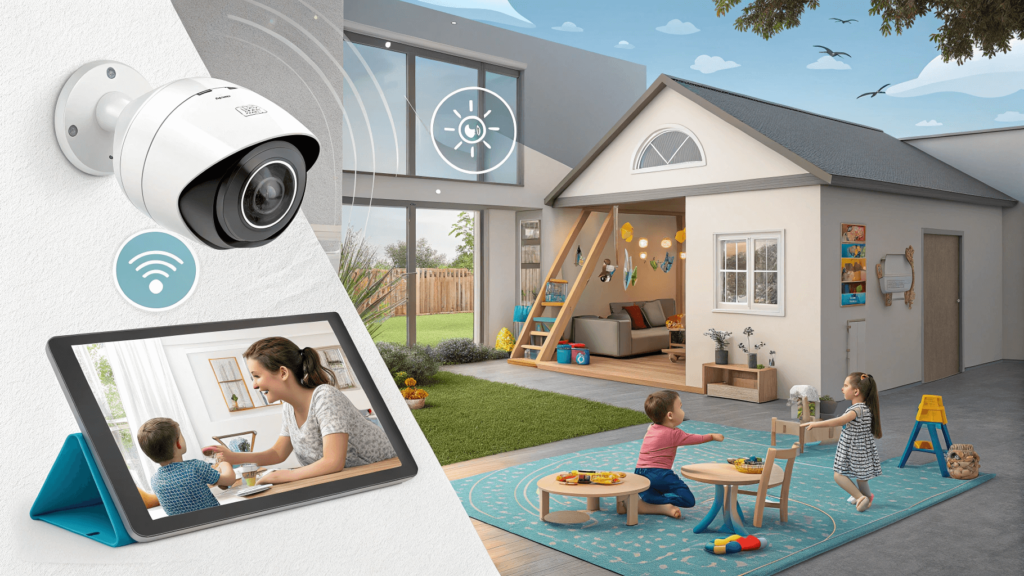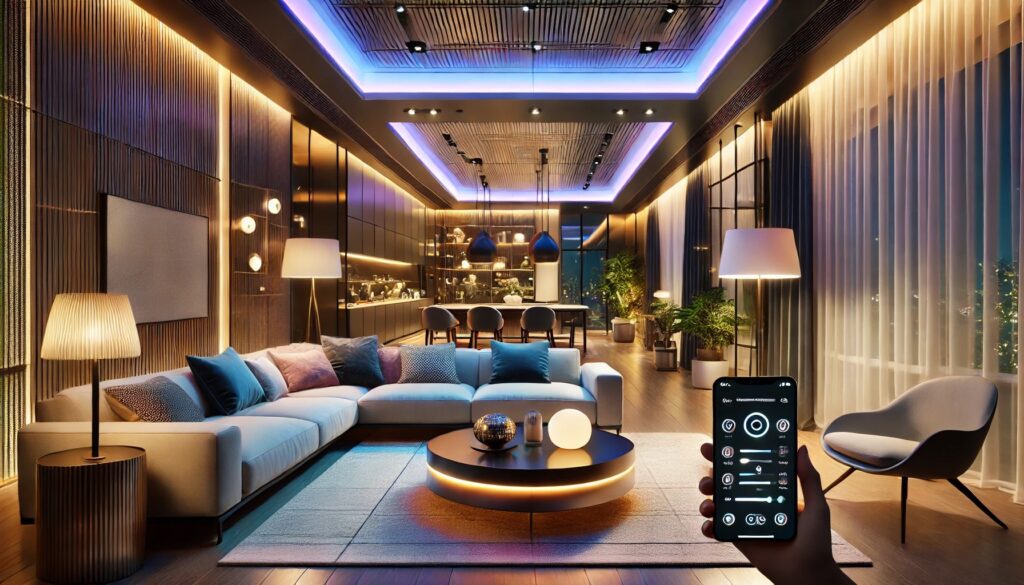As a parent and smart home enthusiast, I know that creating a kid-friendly smart home environment that’s both enriching and safe for kids requires thoughtful planning. Whether you’re a first-time homebuyer or looking to upgrade your existing space, this guide will help you transform your home into a kid-friendly smart haven that balances innovation with safety.
The Foundation: Why Create a Kid-Friendly Smart Home Environment?
Remember when “home automation” meant clapping to turn lights on and off? Today’s smart homes offer so much more, especially for families with children. From monitoring your toddler’s nursery to helping teens develop healthy tech habits, smart home technology can be a powerful ally in modern parenting.
Essential Components of a Kid-Friendly Smart Home Environment
1. Smart Security: Keeping Little Ones Safe
Safety first, as every parent knows! A kid-friendly smart home starts with robust security features:
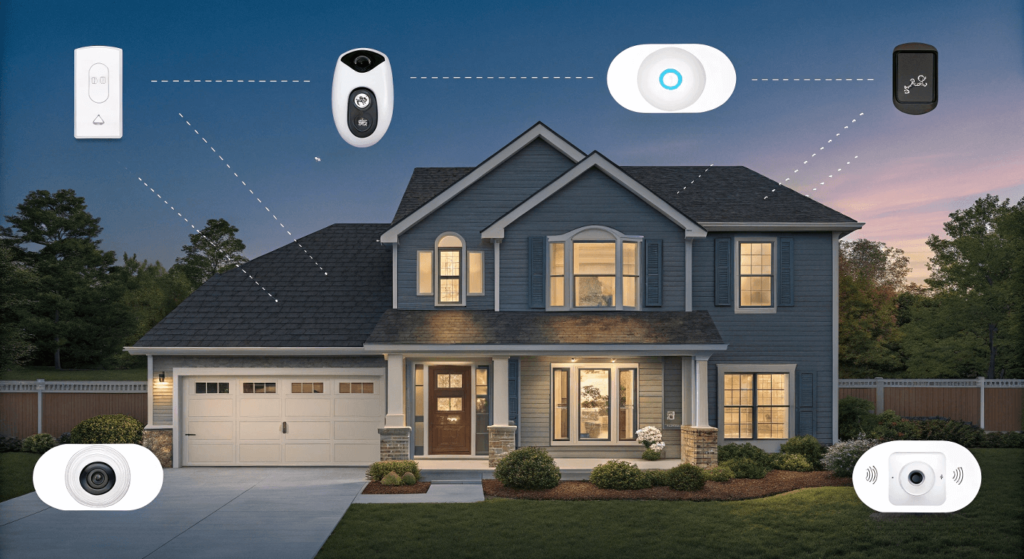
- Smart Doorbell Cameras: Keep an eye on who’s at the door and when older kids come home from school. These cameras have motion detection and night vision, which allow you to monitor your home even when you’re not at home. Popular brands like Ring, Nest, or Arlo offer great options that are also easy to use.
- Window and Door Sensors: Receive instant alerts if curious toddlers venture near exit points. These sensors can be easily attached to windows or doors, and will send notifications to your smartphone if opened or closed, and can be a great way to keep your toddlers safe, and will provide you with peace of mind. The Wyze Sense or Aqara sensors are affordable and easy to install.
- Motion Detectors: Monitor restricted areas like medicine cabinets or tool storage. Motion detectors can be installed anywhere in your home and will send alerts when motion is detected. Popular options are the Philips Hue motion sensors, which can also be integrated with your lighting.
2. Intelligent Monitoring: Peace of Mind for Parents
Today’s monitoring systems go beyond basic baby monitors, as highlighted by housing.com’s comprehensive guide:
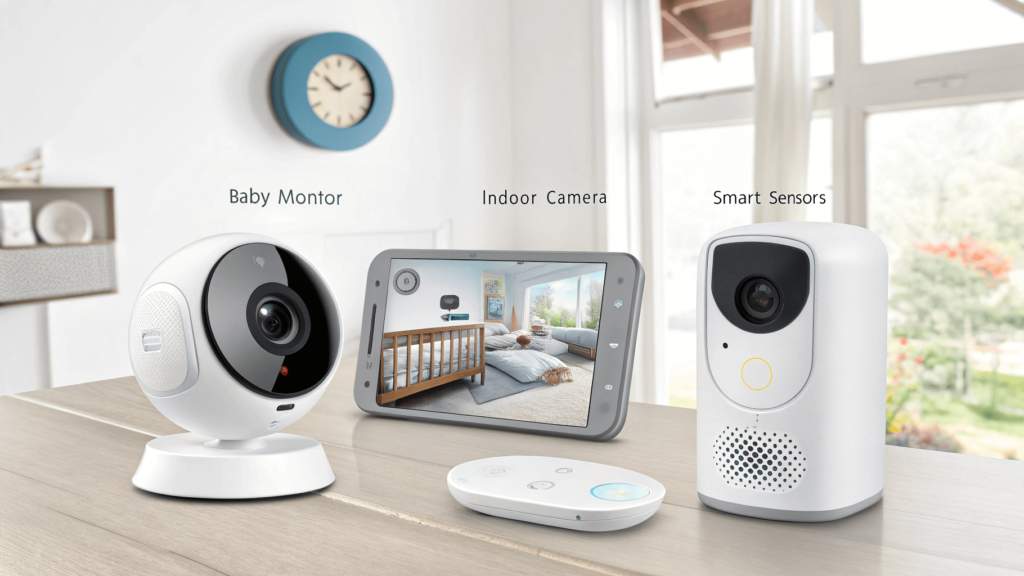
- Advanced Baby Monitors: Track sleep patterns, room temperature, and breathing. High end monitors such as the Nanit Pro and the Owlet Dream Sock, can offer tracking for your baby’s sleep patterns, room temperature, and even breathing. The Owlet Dream Sock will even send alerts if their breathing or heart rate is too low or high. Lower end monitors such as VTech VM819 and the Infant Optics DXR-8 will still allow you to monitor video and audio of your baby’s room.
- Indoor Cameras: Check on playroom activities from your smartphone. Indoor cameras such as the Wyze Cam v3 or the Nest Cam, will allow you to remotely monitor the activity in your home. Both cameras have night vision, as well as two-way audio and motion detection.
- Smart Sensors: Monitor air quality and detect potential hazards. Smart sensors such as the Airthings Wave Mini can monitor things like temperature, humidity, and VOCs in your home, while high-end monitors such as the Airthings View Plus can monitor for PM2.5, radon, and carbon dioxide. Having these sensors can help parents ensure that the environment is healthy for their children.
3. Educational Technology Integration
Transform your home into a learning environment with strategies recommended by experts:
- Interactive Smart Speakers: Enable kid-friendly skills and educational games. Smart speakers like the Amazon Echo Dot and the Google Nest Mini allow parents to easily play music, educational games, and podcasts for their children, which can help to make learning fun. Smart speakers can also be used to set reminders, play stories, and answer questions.
- Smart Displays: Schedule homework time and display educational content. Smart displays like the Google Nest Hub or the Amazon Echo Show can be used to display calendars, which will help kids keep track of assignments. These devices can also display educational content and tutorials, which will encourage learning.
- Automated Reading Lights: Create perfect conditions for story time. Smart lights such as Philips Hue or Wyze bulbs can be programmed to create a calming atmosphere for bedtime reading. These lights can also change colors, and brightness, creating the perfect environment for reading.
Addressing Common Parent Concerns
Is it Safe to Have AI and Tech in My Child’s Room?
This is one of the most frequent questions I hear from parents. The short answer is yes – when properly configured. Here’s how to ensure safety:
- Create separate networks for children’s devices: Use your router’s settings to set up a guest network that’s separate from your main network, so your kids’ devices are isolated, and you have more control over them.
- Enable parental controls and content filters: Make sure you use the parental controls that are available on your device, so you can filter the content that your kids can see, which includes specific websites, and apps.
- Regularly update security settings: Be sure that your devices are all updated, and have the latest security patches. This can help protect your information and prevent your device from being compromised.
- Monitor device usage through family accounts: Most smart devices will provide you with a dashboard that will allow you to track your family’s usage of the device. Check the accounts regularly to ensure they’re being used responsibly.
- Research the Brands: You must always check the reviews and research the brands before purchasing smart home technology.
Screen Time Management: Finding the Right Balance
One of the biggest challenges in a smart home is managing screen time. Here’s my tried-and-tested approach, incorporating insights from child development experts:
- Set Clear Boundaries:
- Establish device-free zones such as bedrooms and meal time areas, so that children are not glued to their devices at all times
- Create automated schedules for device access, by setting specific times when the devices can be used. For example, you can set times when children are allowed to play games or watch videos.
- Use smart plugs to control gaming consoles. With smart plugs, you can set timers, and schedules to limit how long your children can play video games. Smart plugs such as the Amazon Smart Plug and the WeMo Mini, can be controlled remotely with your smartphone.
- Encourage Active Technology Use:
- Interactive learning games, such as ABC mouse and Khan academy, to engage and teach children in a fun and interactive way.
- Family fitness activities using smart equipment, such as fitness trackers like Fitbit or Apple watches, to track steps and encourage active time.
- Creative projects using smart art tools such as drawing tablets and apps to enhance their creativity.
Smart Home Setup: A Room-by-Room Guide
The Kitchen: Heart of the Smart Home
As recommended by smart home experts, the kitchen can become a hub of safe, interactive learning:
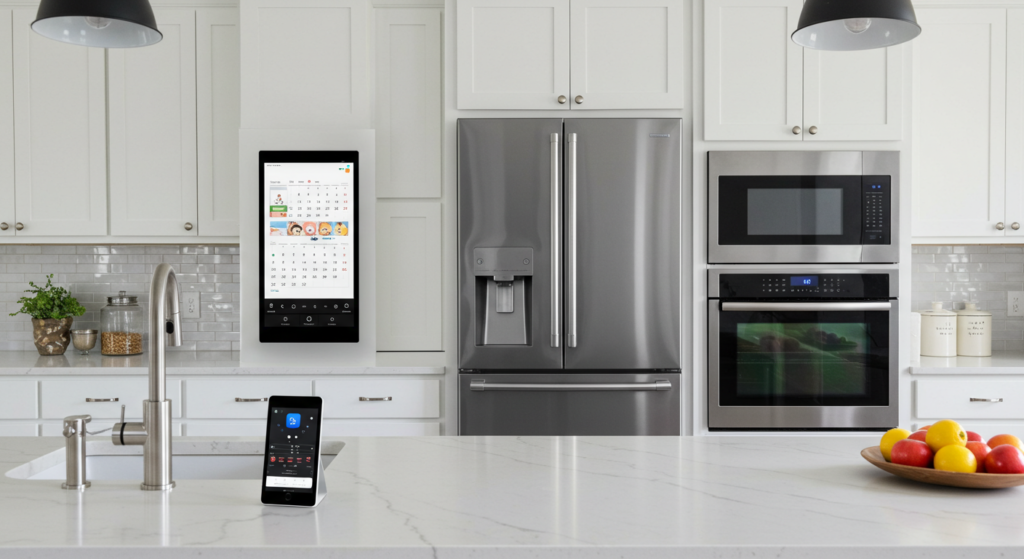
- Voice-controlled appliances: You can use smart voice assistants like the Amazon Echo or the Google Nest, to safely use your appliances.
- Smart refrigerators: Use smart refrigerators, like the Samsung Family Hub, to help your family with meal planning and keep track of important dates and events.
- Automated pantry inventory: Track snacks and meals with smart containers that can track expiration dates and let you know when you need to buy more.
Bedrooms: Creating Safe Havens
Research shows that smart bedrooms can promote better sleep and safety:
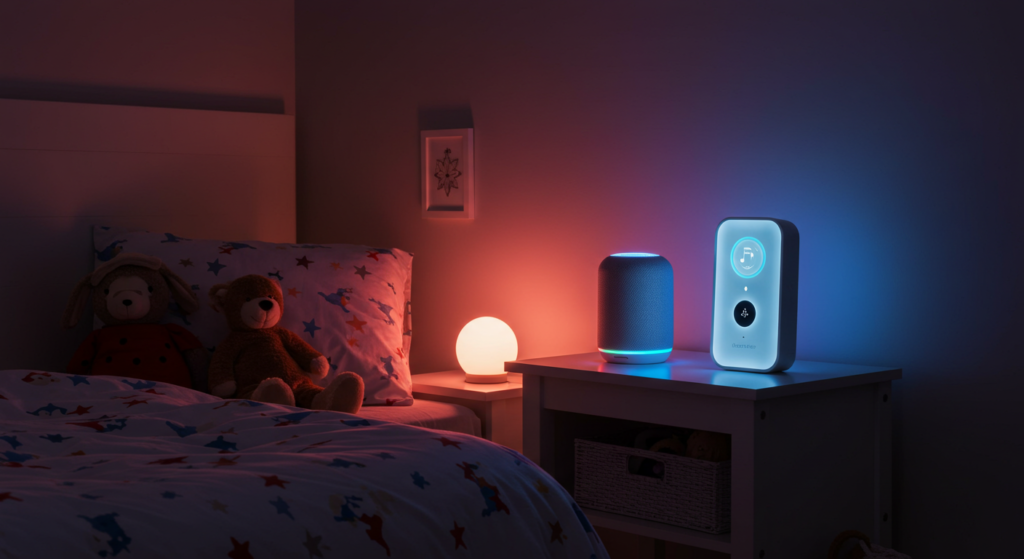
- Smart lighting: Set automated bedtime routines that will help your children calm down and fall asleep. Smart lighting systems like the Philips Hue and Wyze bulb, will allow you to customize your lights, and adjust the brightness and colors of your lights, to promote a relaxing sleep environment.
- Air quality monitors: Smart monitors like the Airthings Wave Mini, and the Airthings View Plus, can be used to monitor and improve the air quality of your child’s bedroom, which is important for a healthy sleeping environment.
- Smart speakers: Use smart speakers like the Google Nest Mini or the Amazon Echo Dot, to play white noise or bedtime stories that will help your children fall asleep faster and have a better sleep.
Playroom: Educational Entertainment
Transform play areas into learning spaces with:
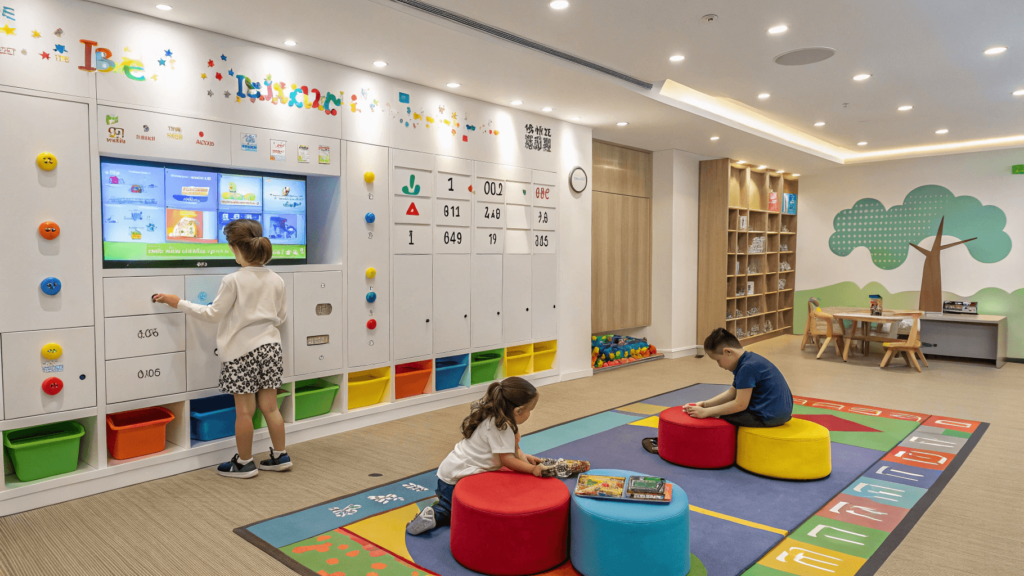
- Interactive learning walls: You can use a smart projector, and project interactive educational content onto the walls of the playroom, which will make learning more interactive.
- Smart storage: Use smart storage containers to organize toys with LED indicators, which will make clean up time more easy for your children.
- Activity trackers: You can use activity trackers such as Fitbit, or Apple watches to monitor physical activity levels of your children throughout the day, which is beneficial for their health and well being.
Implementation Tips for Different Age Groups
Toddlers (Ages 2-4)
Following child development guidelines:
- Focus on safety features like window and door sensors to keep them safe.
- Simple voice commands to make it easy for them to interact with the smart devices.
- Basic routine automation can help your toddlers understand their daily schedules and routines.
School-Age Children (Ages 5-12)
As suggested by education experts:
- Integrate educational technology, and make learning fun and interactive for your children.
- Use monitored device access to make sure that they are using the devices appropriately.
- Use homework assistance tools, such as smart displays, and educational apps to help them with their assignments.
Teenagers (Ages 13+)
Based on research into teen tech use:
- Allow independent device management, as long as they are following the rules.
- Be sure to have privacy considerations, and teach them about privacy settings and security.
- Provide responsible tech usage training and educate them on the proper and responsible use of their devices.
Budget-Friendly Smart Home Solutions
Smart home specialists recommend these cost-effective approaches:
- Start Small:
- Begin with essential security features such as cameras and doorbells, to make sure your family is safe.
- Add components gradually, as your budget allows.
- Look for multi-purpose devices that can fulfill multiple needs and purposes.
- DIY Options:
- Self-install basic components yourself, by following the instructions that are provided with the device.
- Use free smart home apps to manage your devices, which are compatible with a wide variety of smart home devices.
- Repurpose old devices. Old smartphones and tablets can be repurposed into security cameras, smart displays, or remotes.
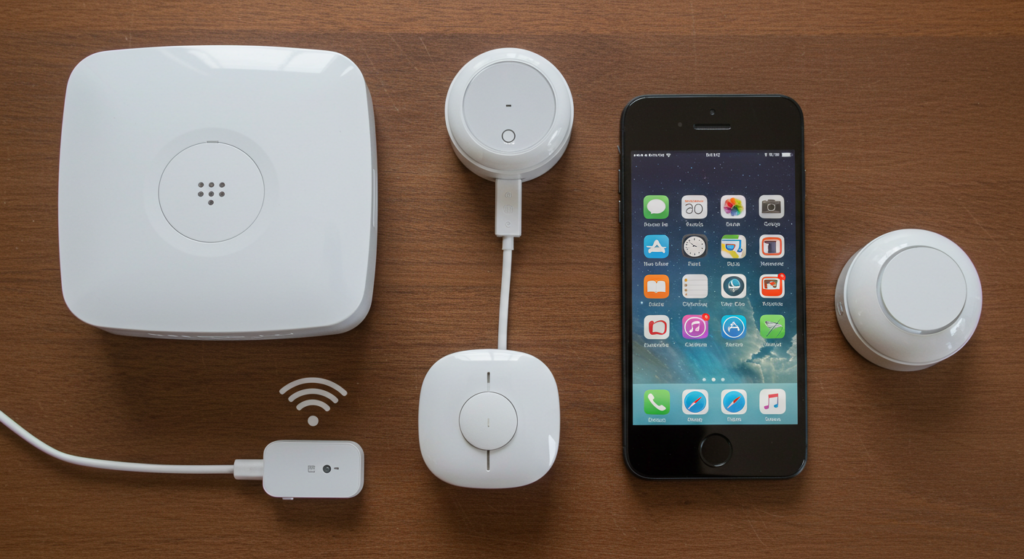
Cost Comparison of Essential Smart Home Devices for Families
| Device Category | Budget Option | Mid-Range Option | Premium Option | Key Features to Consider |
| Smart Hub | Amazon Echo Dot ($49.99) | Google Nest Hub ($99.99) | Apple HomePod ($299.99) | Voice control, screen size, compatibility |
| Security Camera | Wyze Cam v3 ($35.99) | Ring Indoor Cam ($59.99) | Nest Cam IQ ($299) | Resolution, night vision, storage options |
| Smart Doorbell | Ring Video Doorbell Wired ($64.99) | Ring Video Doorbell Pro ($169.99) | Nest Doorbell ($229.99) | Motion detection, video quality, power source |
| Smart Locks | Wyze Lock ($129.99) | August Wi-Fi Smart Lock ($229.99) | Yale Assure Lock 2 ($279.99) | Auto-unlock, guest access, battery life |
| Baby Monitor | VTech VM819 ($39.99) | Infant Optics DXR-8 ($165.99) | Nanit Pro ($299) | Temperature sensing, breathing monitoring, video quality |
| Smart Lighting | Wyze Bulb ($9.99/bulb) | Philips Hue White ($24.99/bulb) | Philips Hue Color ($49.99/bulb) | Color options, brightness, smart features |
| Motion Sensors | Wyze Sense ($19.99) | Aqara Motion Sensor ($39.99) | Philips Hue Motion ($49.99) | Range, sensitivity, battery life |
| Smart Plugs | Amazon Basic ($12.99) | WeMo Mini ($24.99) | Eve Energy ($39.99) | Energy monitoring, schedules, away modes |
| Air Quality Monitor | Temtop M10 ($79.99) | Airthings Wave Mini ($79.99) | Airthings View Plus ($299) | Pollutant detection, historical data, app features |
Starter Package Estimates:
- Basic Setup (Hub + 2 Cameras + Doorbell + 4 Bulbs): $200-300
- Mid-Range Setup (Hub + 4 Cameras + Doorbell + Smart Lock + 6 Bulbs): $500-700
- Premium Setup (Hub + 4 Cameras + Doorbell + Smart Lock + 10 Bulbs + Sensors): $1,000+
Note: Prices are approximate and may vary by retailer and region. Consider compatibility with your chosen ecosystem (Apple HomeKit, Google Home, or Amazon Alexa) when making purchases.
Looking to the Future: Growing with Your Family
As your children grow, your smart home should evolve too. Consider these future-proofing strategies:
- Scalable systems that can be upgraded with additional devices and software updates.
- Flexible automation that adapts to changing needs such as different bedtime schedules, or adding more devices.
- Future-proof infrastructure such as hardwiring your home for new technology, which allows you to easily update your smart home.
Conclusion: Creating Your Family’s Smart Home Journey
Building a kid-friendly smart home isn’t just about installing the latest gadgets – it’s about creating an environment that nurtures, protects, and grows with your family. Start with the basics, focus on safety and education, and gradually expand your system as your family’s needs evolve.
Ready to Get Started?
Begin your smart home journey with these simple steps:
- Assess your family’s specific needs and determine what devices might be best for your family.
- Create a budget and priority list so you know what to purchase first and when to purchase the other items.
- Start with essential security features to ensure that your family is safe.
- Gradually add educational and convenience components to make your home even smarter.
Remember: Technology should enhance, not replace, family interaction. Create a smart home that brings your family closer together while preparing your children for a digital future.
Additional Resources:
- For visual guidance, check out this comprehensive video guide on setting up a kid-friendly smart home
- Learn more about outdoor smart features for complete home coverage
Explore advanced security options for growing families

